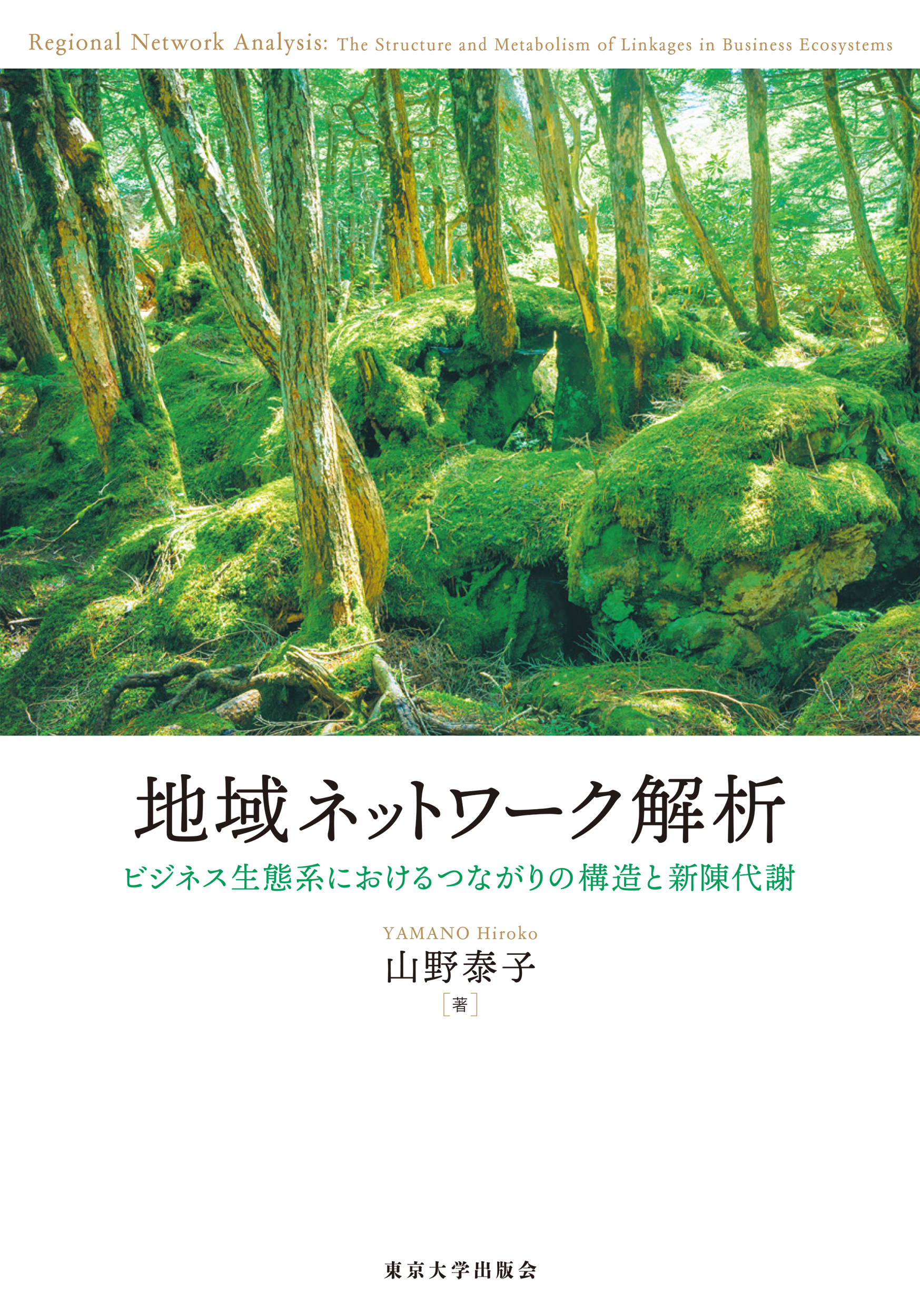
Title
Chiiki Network Kaiseki (Regional Network Analysis - Structure and Metabolism of Linkages in Business Ecosystems)
Size
272 pages, A5 format
Language
Japanese
Released
February 19, 2024
ISBN
978-4-13-046140-5
Published by
University of Tokyo Press
Book Info
See Book Availability at Library
Japanese Page
Why do climax forests not decline? The concept of this book arose from my interest in the mechanisms that maintain climax forests, the final stage of vegetation succession. Even climax forests that remain stable for long periods have dynamics shaped by repairing gaps that disturb the ecosystem. When gaps are created in the forest owing to tree mortality, fallen logs, lightning strikes, or fires, environmental conditions are renewed, creating opportunities for new plant species to enter. This mechanism, known as gap dynamics, is essential for maintaining forest biodiversity. In business ecosystems that have reached a mature stage of economic development, firms also exist in networks in which they influence each other. Learning from the dynamics of climax forests, which are mature forest ecosystems, can provide valuable insights into developing a mature economy or sustainable society. This was the starting point for the concept of this book.
Biological analogies, such as forest analogies, are often used in classical economics. This book draws on the theoretical discussions of the steady state by J. S. Mill and A. Marshall and problem settings based on biological analogies to explore the meaning of dynamics in a steady state, informed by a contemporary understanding of climax forests. In climax forests, young pioneer species that require extensive light to grow do not flourish; instead, shade-tolerant species that can thrive in shaded forest environments dominate. Thus, climax forests, where shade-tolerant species replace each other, remain steady and have the flexibility to allow the entry of different species through disturbances.
Inspired by reflections on the steady state and gap dynamics, this book proposes two network indicators for analyzing inter-firm links: “metabolism,” based on the dynamics of links, and “PW index,” based on the structural characteristics of the network. When applied to supply chains that represent networks of inter-firm transactions, “metabolism” indicates the extent to which each firm has replaced its business partners; the “PW index” reflects the extent to which each firm has rare transaction links that fill gaps in the supply chain. Applying these proposed indicators to supply chains in the Tohoku region over ten years, including before and after the Great East Japan Earthquake, we found that firms with a certain metabolism level tend to have comparatively long-lasting durations. Moreover, firms with rare transaction links are crucial in the evolution of clusters, which are densely connected substructures in the network. These results suggest that the dual mechanisms that balance the stability and novelty of connections also work in business ecosystems.
I hope you understand why the cover of this book features a photograph of a forest. Indeed, the concept of this book struck me while walking through the climax forests of Kita-Yatsugatake. The analogy between forests and business networks serves as a helpful guide for diverse readers when considering strategies for adapting to the ever-changing modern market.
(Written by YAMANO Hiroko, Lecturer, Institute for Future Initiatives / 2024)



 Find a book
Find a book


 eBook
eBook